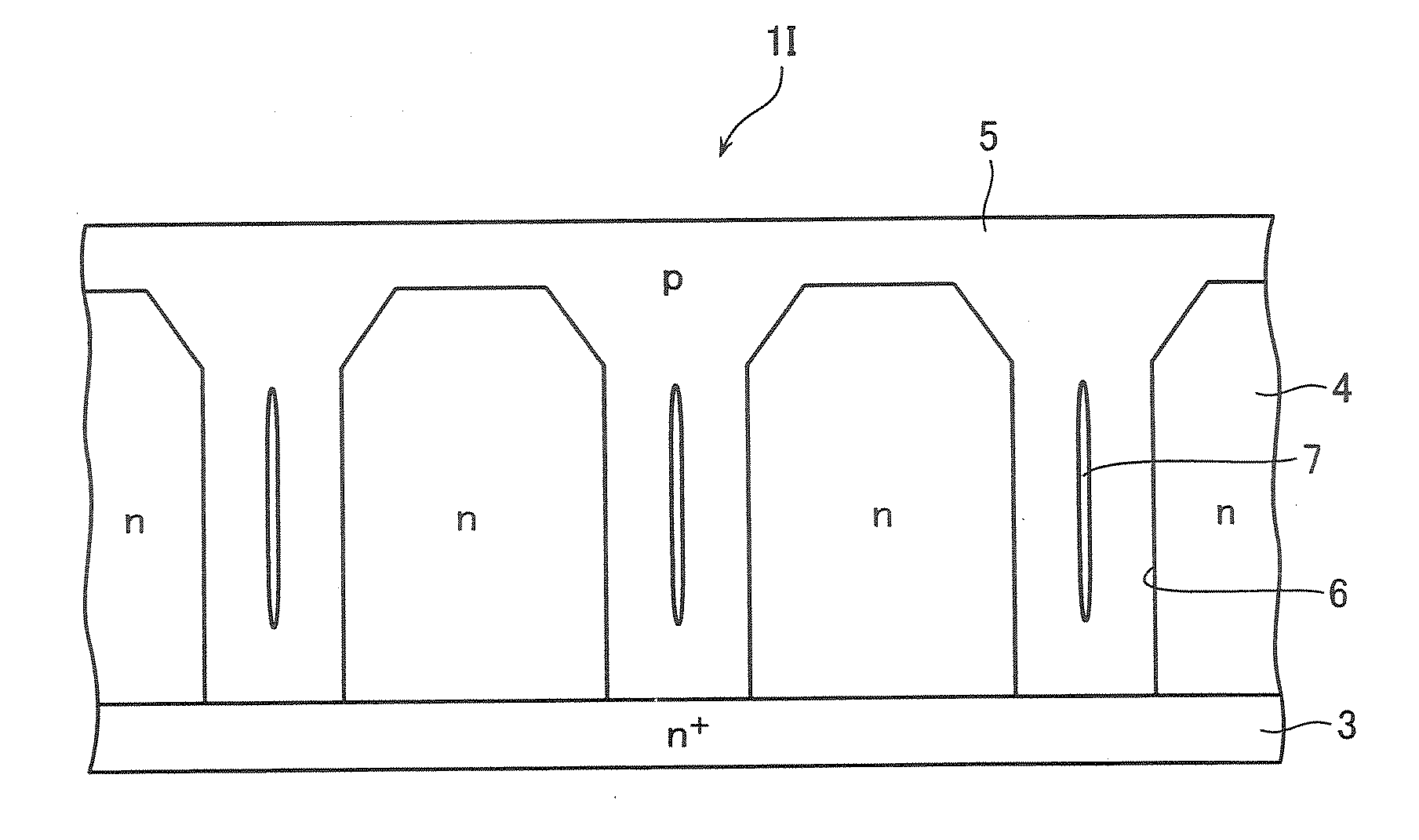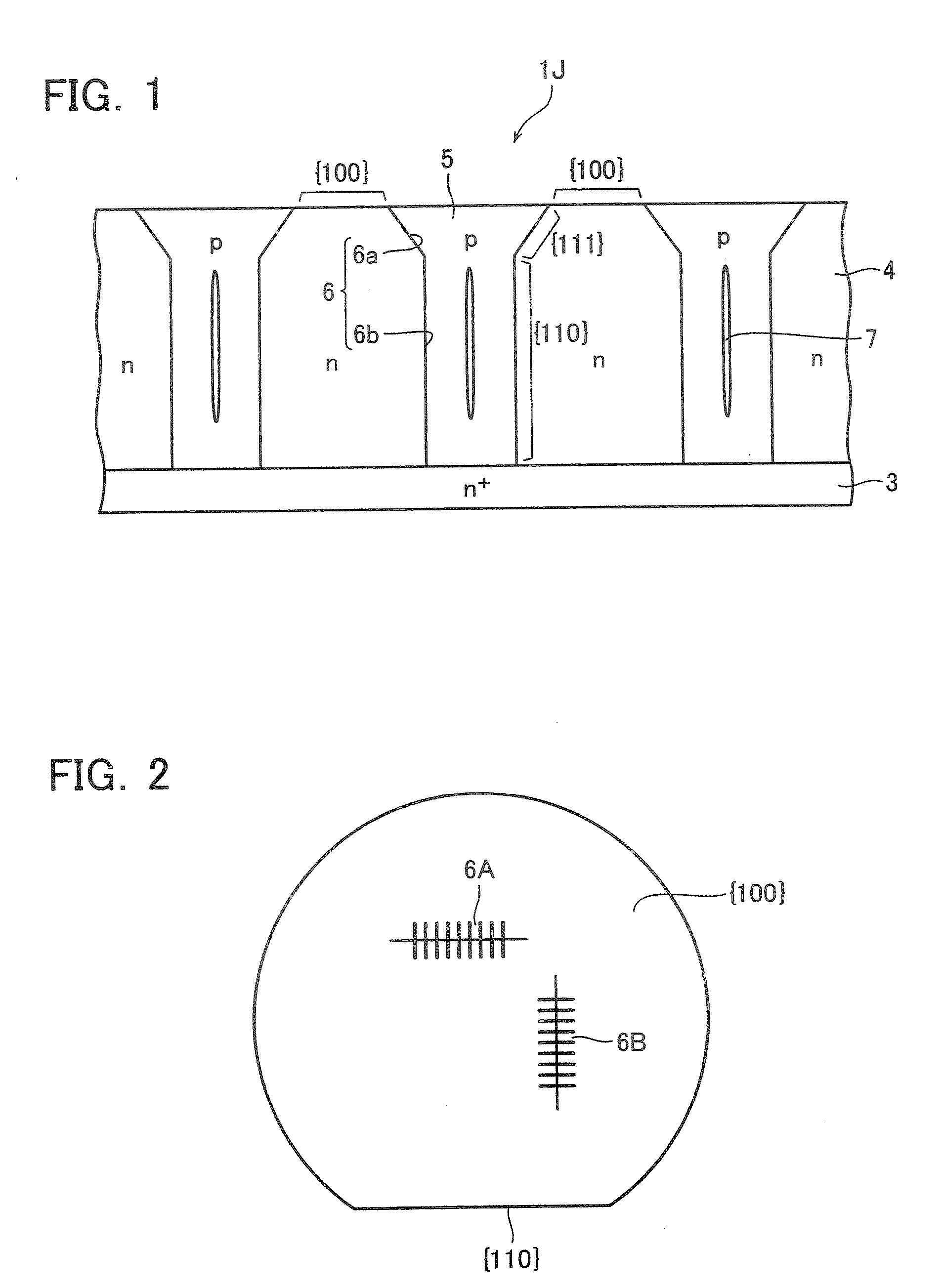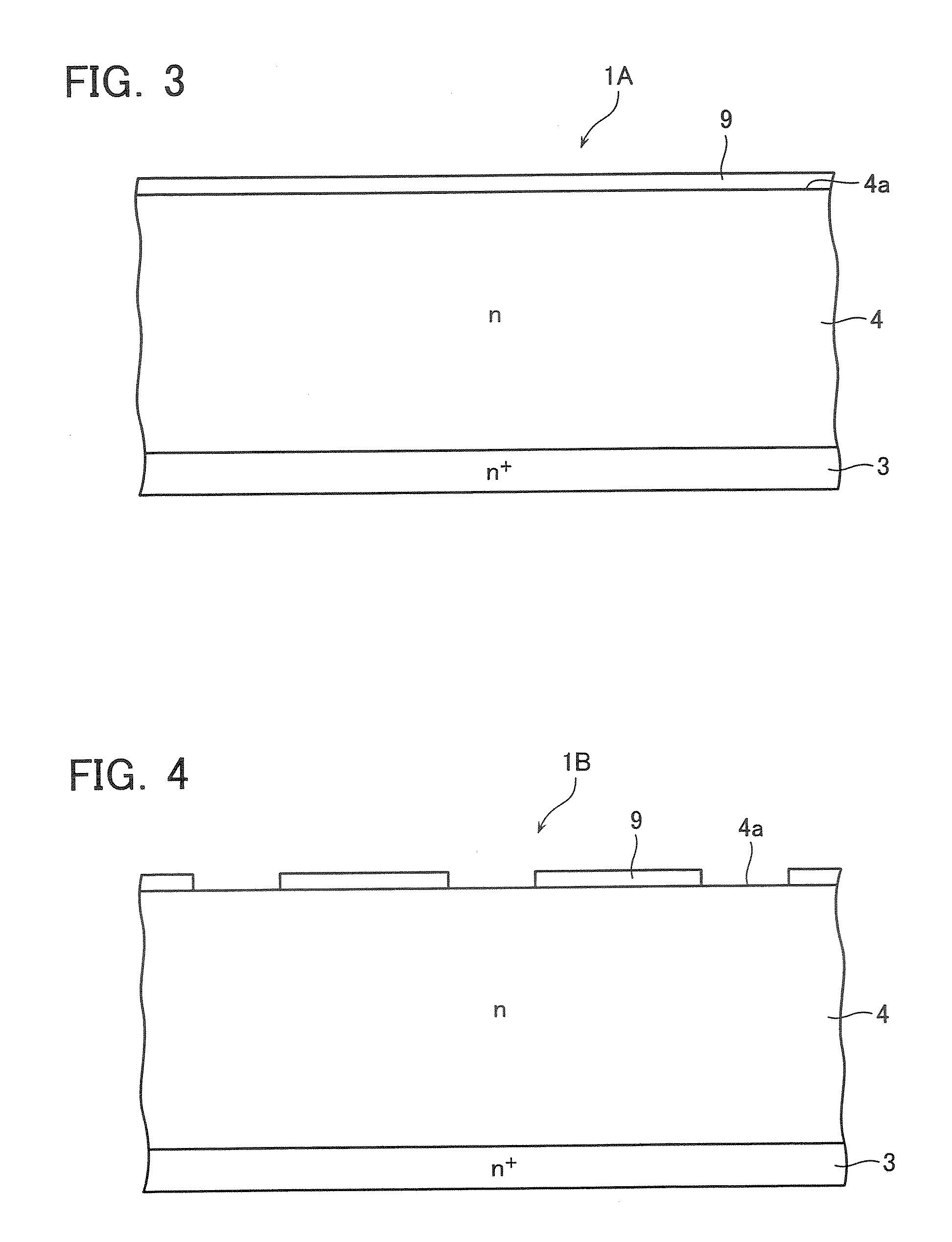Semiconductor device and method of fabricating the same
- Summary
- Abstract
- Description
- Claims
- Application Information
AI Technical Summary
Benefits of technology
Problems solved by technology
Method used
Image
Examples
first embodiment
[0029]FIG. 1 is a partial vertical cross-sectional view of a semiconductor device, or an vertical SJ-MOSFET, during a fabrication process according to a first embodiment of the present invention. This semiconductor device 1J is configured as follows. An n+-type semiconductor substrate 3 (such as a silicon substrate) serves as a drain layer, on which an n-type first semiconductor layer 4 is disposed. A plurality of deep trenches 6 are formed periodically along the plane of the first semiconductor layer 4, and a p-type second semiconductor layer 5 is buried in the trenches 6 by epitaxial growth. A void 7 may possibly arise inside the second semiconductor layer 5 during the process of fabricating the semiconductor device 1J while this embodiment allows such the void to arise. The trench 6 is an elongated groove extending in the direction perpendicular to the page, or a groove having a square or rectangular lateral section. The trench 6 is defined by a V-grooved upper stage sidewall 6a ...
second embodiment
[0047]FIG. 16 is a vertical cross-sectional view showing a step during fabrication of a semiconductor device 1J′ according to a second embodiment of the present invention. In the semiconductor device 1J according to the first embodiment, the trenches 6 are formed such that the upper stage sidewall 6a has the surface orientation of substantially {111} and the lower stage sidewall 6b has the surface orientation of substantially {110}. To the contrary, in the second embodiment, trenches 6 are formed such that an upper stage sidewall 6a′ has a surface orientation of substantially {111} and a lower stage sidewall 6b′ has a surface orientation of substantially {100}. The growth speed of silicon in epitaxial growth varies in relation to {100}>{110}>>{111}. Accordingly, if the upper stage sidewall has the surface orientation of substantially {111}, the surface orientation of the lower stage sidewall may be either substantially {110} or substantially {100} to exert the above-described effect...
third embodiment
[0050]FIG. 18 is a vertical cross-sectional view of a semiconductor device according to a third embodiment. In the semiconductor device 1 of the first and second embodiments, the p-type base region 2 is formed deep such that a lower end thereof locates beneath the boundary between the upper stage sidewall 6a and the lower stage sidewall 6b of the trench 6. To the contrary, in the semiconductor device 1N of the third embodiment, the p-type base region 2 is formed such that a lower end thereof locates above a boundary 6Nc between an upper stage sidewall 6Na and a lower stage sidewall 6Nb of a trench 6N. Such the structure can exert the above-described effect.
[0051] In the above embodiments the present invention is applied to the power MOSFET having the superjunction structure including a plurality of deep trenches formed therein. The first through third embodiments can also be applied to any semiconductor devices that can be produced by forming trenches in the first semiconductor lay...
PUM
 Login to View More
Login to View More Abstract
Description
Claims
Application Information
 Login to View More
Login to View More - R&D
- Intellectual Property
- Life Sciences
- Materials
- Tech Scout
- Unparalleled Data Quality
- Higher Quality Content
- 60% Fewer Hallucinations
Browse by: Latest US Patents, China's latest patents, Technical Efficacy Thesaurus, Application Domain, Technology Topic, Popular Technical Reports.
© 2025 PatSnap. All rights reserved.Legal|Privacy policy|Modern Slavery Act Transparency Statement|Sitemap|About US| Contact US: help@patsnap.com



